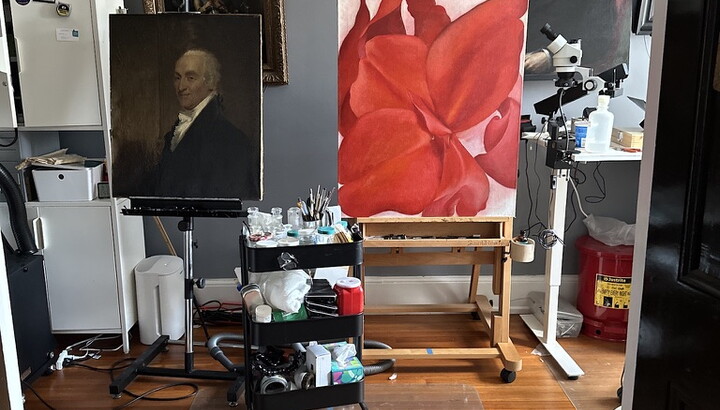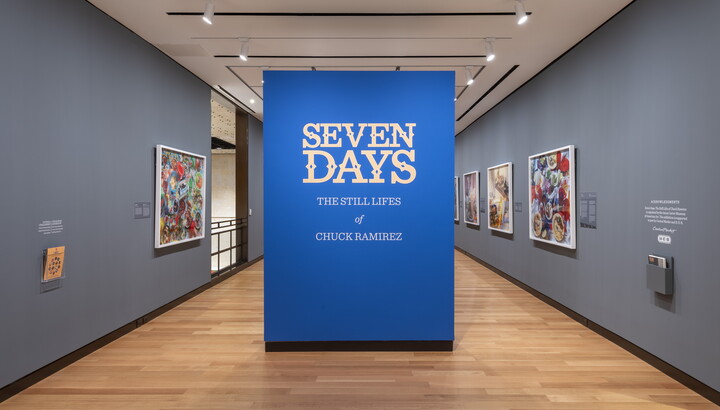The Carter Blog
Carter ARTicles
The hidden creativity of lithography
Oct 05, 2022
When it comes to printmaking, there’s no substitute for hands-on experience. Whether it’s etchings or engravings, screen prints, or some other medium, each type of print has its own nuances, not all of which are obvious when examining a finished work. This past spring, I had the opportunity to explore the hidden complexities of lithography during a professional workshop organized by the Association of Print Scholars. I came away with a deeper understanding of the creative skill involved in printing.
Held in Albuquerque and Santa Fe, the workshop offered hands-on training for early career curators and scholars who study printmaking but don’t have experience making their own prints. As part of the program, we spent several days at the Tamarind Institute, a nonprofit dedicated to the advancement of fine art lithography. I was especially excited about this opportunity because the Carter is home to over 2,300 works from Tamarind, all created during the 1960s when the organization was based in Los Angeles.
Prior to visiting Tamarind, I had a basic grasp of how lithographs were made. (This video from National Museums Liverpool offers a useful overview). But I’d never seen the process in person. Fortunately, Tamarind gave us a crash course. Over two days, Master Printer Brandon Gunn walked us through the steps of designing, preparing, and printing our own lithographs, with help from Apprentice Printers Andreea Cristina Mateescu and Maxwell Roath.
I’m no artist, so for my print I decided to create as many different textures, tones, and washes as I could, with the hope that I’d leave with an inventory of forms that I could consult when studying lithographs from our own collection.
Drawing was fun enough, but I really wanted to try out the “etch”—the step where the printer sets the drawing so that it can be printed. During the etch, the drawing is brushed with a gooey solution of water, gum arabic, and diluted nitric acid. Through a bit of chemistry, the acid interacts with the limestone surface and the oils on the drawing to produce fatty acid salts. These salts bind to the stone surface, and they are what holds the ink during printing. In short, the etch creates a chemical impression of the artist’s drawing, and this impression stays even after the drawing itself is rinsed off.
It’s easy to screw up the etch. Use too much acid or leave it on too long and the image will print too light. Use too little and the image will print too dark. To complicate things, most fine art prints require multiple etchings, and each part of a composition requires a different concentration of acid. A bad etch can destroy a work, forcing the artist to start over. Thanks to my instructors, my print turned out ok. It was a bit too light, but overall, it was reasonably close to my original design.
Through this exercise, I gained a newfound appreciation of the skill involved in printing. Looking at my print, it was easy to see evidence of my inexperience—spots where the acid turned subtle mid-tones into ghostly outlines. In contrast to my work, a successful etch will leave no trace. The traditional goal of a printer is to create an exact reproduction of the artist’s original design, without any visible signs of manipulation or variation. In this sense, the printer strives to be invisible.
It takes an extraordinary amount of skill to be invisible in this way. Apprentice printers at Tamarind spend weeks refining their etching skills. And etching isn’t an exact science. Every lithograph poses a unique challenge that requires the printer’s accumulated experience, intuition, and judgement. Viewing prints in a gallery, it’s often easy to miss the hidden steps involved in realizing an artist’s vision, but with firsthand experience, hidden worlds of creativity and skill emerge.








